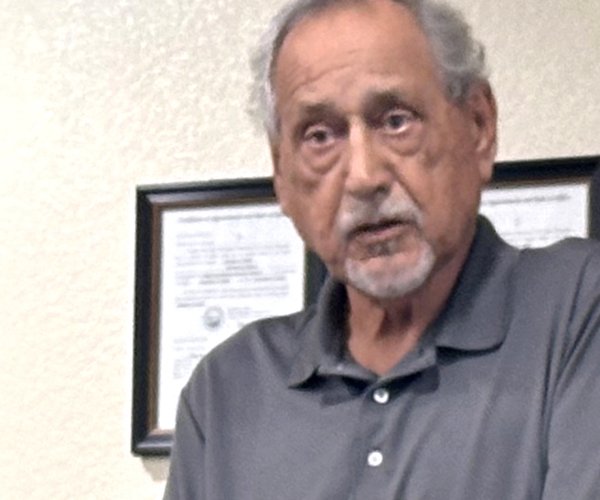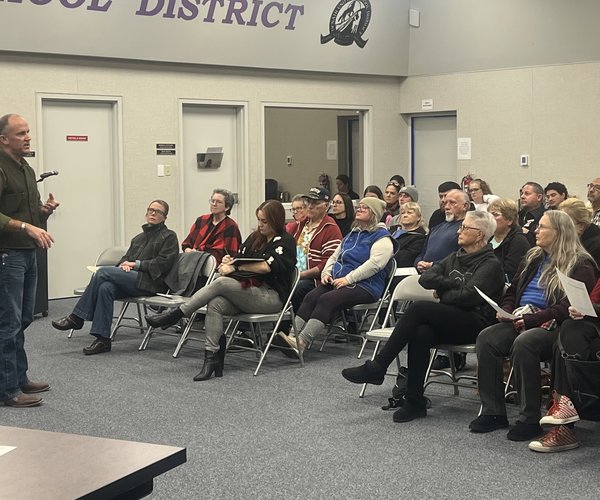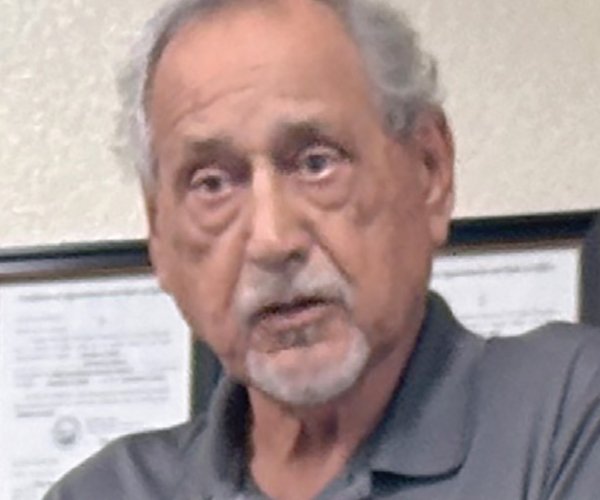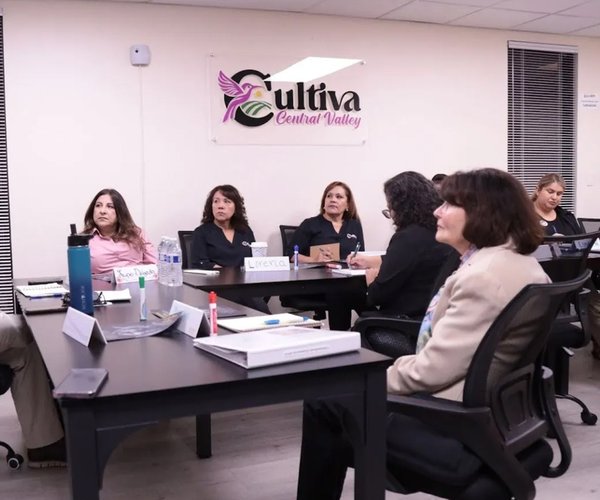The Turlock Police Department held their annual awards ceremony Thursday to give recognition to those employees and volunteers who have done exemplary jobs for the department and the Turlock community as a whole.
Each year the police department honors the volunteer, employee and officer of the year. They also present an award of excellence to an individual or a unit and present any special citations and medals for those individuals who have gone beyond their regular duties in service to the community. The employees at the department make the nominations and a committee makes the award selections.

A Medal of Meritorious Service was presented to Officer Ryan Mulhim for his efforts to try and save a drowning teenager at Turlock High School.
Just before midnight on Aug. 19, 2022, the Turlock Police Department Dispatch received multiple 911 calls reporting a boy at the bottom of the Turlock High School swimming pool and efforts to pull him out had been unsuccessful.
Mulhim was the first officer to arrive at the scene and without hesitation or even to strip off any extra weight, he dove in to bring the teenager up from the bottom of the 13-foot-deep pool.
“Despite the excess weight from his gear, Officer Mulhim was able to swim to the bottom of the pool and retrieve the non-responsive boy,” said Turlock Police Chief Jason Hedden.
Mulhim was able to bring the boy to the surface and pulled him to the side of the pool where other officers were able to help pull the boy out of the water.
“Officer Mulhim’s actions that night upheld the highest values of public safety,” Hedden said.
The department’s Excellence Award was presented to the Property and Evidence team - Linda Christy, Melanie Suffecool, Ruth Hoover, and Rochelle Segarini.
“This area of the department is often overlooked, but the dedication of the two women who work inside the room, Linda and Melanie, as well as the two people who serve as their backup, Ruth and Rochelle, are essential to the total operation of the department,” Hedden said. “They make sure that the DA's Office has the evidence that they require for prosecution, promptly return property to all members of the community, and assist anyone who asks with the proper way to package everything that needs to be booked into the property room.”

Officer Martin Marquez was selected as the Officer of the Year. In nominating Marquez, his colleagues commended his thoroughness, work ethic, intuition and initiative. As an example, Hedden pointed to an arrest last year that Marquez was essential to making happen. Marquez used some “creative thinking” and his knowledge of social media to establish a suspect was illegally selling firearms. This investigation, which was eventually turned over to the Special Investigations Unit, led to the arrest of a subject for weapons sales and manufacturing.
“Officer Marquez has set himself apart with his consistently high motivation and work ethic,” Hedden said. “He is a multitalented officer, who is always searching for ways to improve himself.”
The Employee of the Year award, which goes to non-sworn personnel, was bestowed to Code Enforcement Officer Yesenia Del Real. Del real made the transition from the Turlock Fire Department to the police department in April 2022.
As the code enforcement officer, Del Real “made sure that the citizens’ complaints were addressed,” Hedden said. “This was done with minimal staffing levels and often times she would take the complaint via email or over the phone and then transition to the field to follow up with the inspection of the issue herself. Her hard work did not go unnoticed and she is well deserving of this award this year.”
The Volunteer of the Year award went to Geoffrey Bradshaw, who has been a volunteer with the department for 13 years, all while working full-time and raising a family.
“He has been instrumental in helping with Neighborhood Watch Meetings at block captains’ houses,” Hedden said. “He represents TPD at these meetings giving neighbors great advice on crime prevention strategies to keep their neighborhoods safe. He has participated in working with and mentoring the Explorers. He truly has proven his commitment to the Department, as well as the employees.”
Bradshaw has logged 1,000 volunteer hours with the department.
The Explorer of the Year award was presented to Hayden Elliott, who was also given a $500 scholarship from Jeff and Dara Lopes.
The department also paid a special recognition to the service of three long serving volunteers – Mary Ann Jorge, Skip Young and George Plisko.
Jorge spent many hours during 2022 assisting with Administration, Crime Prevention, Code Enforcement, logging 2,080 hours.
Young routinely volunteers his time to assist patrol and at special events. He has accumulated 10,000 volunteer hours with the department.
Plisko volunteers with Professional Standards and patrol and has now logged 1,5000 hours.
The police department also awarded three special commendations during the ceremony. The first of which was given to Lilia Franco, who supervises the department’s Records Department. Franco has led the department’s California Incident-Based Reporting System project.
“Throughout this past year in 2022, you have been a resource and an invaluable member of the Department,” Hedden said. “You have taken pride in the Records Unit and tackled projects handed to you. Your willingness to come in on your days off and on weekends does not go unnoticed with members of the Department.”
A strong work ethic was what earned Lt. Russell Holeman a special commendation as well. When Capt. Miguel Pacheco was sent off for three months to attend an FBI academy, Holeman was called upon to serve as an acting captain for the department. During that time Holeman handled all the Division Commandeer duties, as well as training lieutenants on various projects.
Acting Captain Holeman ensured the division had the support necessary to maintain operations during this time,” Hedden said. “Upon Captain Pacheco’s return, Acting Captain Holeman provided a detailed briefing on what had occurred during the eleven weeks, and maintained proper notes on items of importance. This allowed for the continued and smooth operations of the division during the transition. Acting Captain Holeman implemented new policy changes, updated processes, and worked to keep his division moving forward in a positive direction.
“Lt. Holeman, thank you for your devotion to this organization and the community of Turlock,” Hedden continued. “By taking on these additional responsibilities, you have helped to ensure that the Police Department continued to provide for the safety of our community members.”
Capt. Steve Rodrigues was awarded a special commendation for his overall job performance over the last year. Hedden pointed out that Rodrigues “has shown personnel his dedication to the overall well-being of each division independently and at the same time, the Department collectively.
“Capt. Rodrigues regularly comes in on his days off to ensure operations of the Department are being handled,” Hedden said. “The sacrifice of his personal time has not gone unnoticed. This has demonstrated his loyalty not only to the department but to each person individually.”





